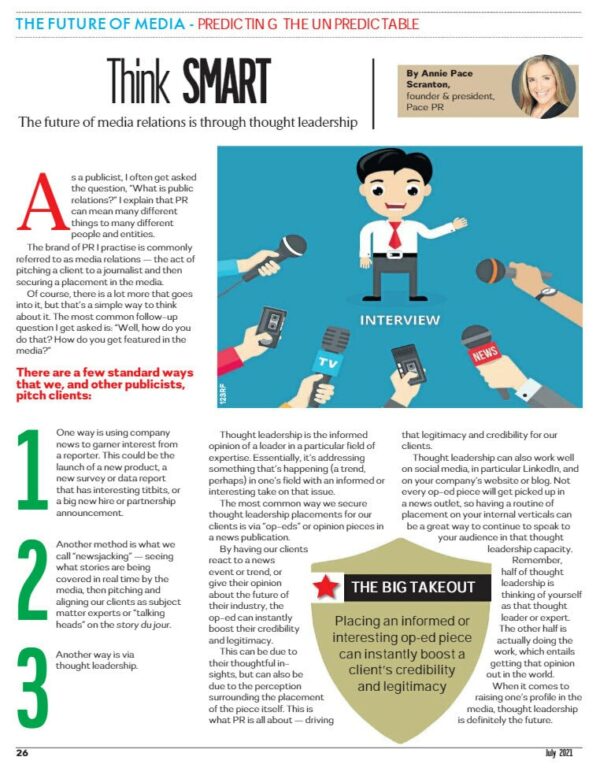
As a publicist, I often get asked the question, “What is public relations?” I explain that PR can mean many different things to many different people and entities. The brand of PR I practice is commonly referred to as media relations — the act of pitching a client to a journalist and then securing a placement in the media. Of course, there is a lot more that goes into it, but that’s a simple way to think about it. The most common follow-up question I get asked is: “Well, how do you do that? How do you get featured in the media?
There are a few standard ways that we, and other publicists, pitch clients:
1) One way is using company news to garner interest from a reporter. This could be the launch of a new product, a new survey or data report that has interesting titbits, or a big new hire or partnership announcement.
2) Another method is what we call “newsjacking” — seeing what stories are being covered in real time by the media, then pitching and aligning our clients as subject matter experts or “talking heads” on the story du jour.
3) Another way is via thought leadership
Thought leadership is the informed opinion of a leader in a particular field of expertise. Essentially, it’s addressing something that’s happening (a trend, perhaps) in one’s field with an informed or interesting take on that issue. The most common way we secure thought leadership placements for our clients is via “op-eds” or opinion pieces in a news publication.
By having our clients react to a news event or trend, or give their opinion about the future of their industry, the op-ed can instantly boost their credibility and legitimacy. This can be due to their thoughtful insights, but can also be due to the perception surrounding the placement of the piece itself. This is what PR is all about — driving that legitimacy and credibility for our clients.
Thought leadership can also work well on social media, in particular LinkedIn, and on your company’s website or blog. Not every op-ed piece will get picked up in a news outlet, so having a routine of placement on your internal verticals can be a great way to continue to speak to your audience in that thought leadership capacity.
Remember, half of thought leadership is thinking of yourself as that thought leader or expert. The other half is actually doing the work, which entails getting that opinion out in the world. When it comes to raising one’s profile in the media, thought leadership is definitely the future.
Click here to read the full article on page 26 of The Future of Media.
